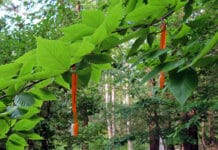The first time I heard the phrase, “dental hygiene diagnosis,” I was completely befuddled. What in the world could this be referring to? Dental hygienists, if I understood correctly, were legally prohibited from diagnosing; the right to diagnose remained the dentist’s right alone. So what does a “dental hygiene diagnosis” involve? Did this phrase refer more to observations such as poor hygiene habits and halitosis? Did telling a patient they had periodontal disease, and subsequently, recommending non-surgical periodontal treatment/scaling and root planing count as a “dental hygiene diagnosis?” To be completely frank, I was certain I had never directly heard of this phrase in my years of schooling and dental involvement. If you too found yourself initially confused when you first heard of dental hygiene diagnosis, there is a reason why.
As of January 1, 2010, the Commission on Dental Accreditation removed the phrases “dental hygiene treatment plan” and “dental hygiene diagnosis” from the Accreditation Standards for Dental Hygiene Education Programs. I, myself, only started my dental hygiene education in September 2010; dental hygiene diagnosis was never officially a part of my formal education. I say officially because this is not entirely true. The ADHA once conducted a survey of program directors from all levels of hygiene programs in 2015, and 99 percent of them indicated that dental hygiene diagnosis was offered in the clinical curriculum. Teachers…they genuinely drove us crazy at times (let’s not reflect on dental hygiene school stresses for too long here), but they were really there to make sure you could be the best you could be once they turn you out into the real world. Still, I set forth on a mission for clarity and sought answers from one of our most trusted sources of all things dental hygiene: the American Dental Hygienist Association.
The ADHA defines dental hygiene diagnosis as:
“The identification of an individual’s health behaviors, attitudes, and oral health care needs for which a dental hygienist is educationally qualified and licensed to provide. The dental hygiene diagnosis requires evidence-based critical analysis and interpretation of assessments in order to reach conclusions about the patient’s dental hygiene treatment needs. The dental hygiene diagnosis provides the basis for the dental hygiene care plan.”
The key focus in this definition is the clarification that any diagnosis made by a dental hygienist must remain within their legal scope of practice. This makes sense; if you cannot directly treat it, you cannot diagnose it. We as hygienists can treat patients who have dental anxieties; however, we cannot diagnose them as phobic or anxious. We can treat gingivitis and periodontitis (non-surgically, of course). Therefore we may diagnose these conditions.
Similar to that of the dental hygiene diagnosis, the dental diagnosis is defined as, “The identification of diseases or conditions for which the dentist directs or provides the primary treatment.”7 Though I would wager that it happens all the time, we as hygienists are actually not permitted by law to tell a patient they have a carious lesion or they have an infection; these words must come from the dentist. Dental hygienists cannot treat caries, necrotic teeth, soft tissue abnormalities, etc.; these diagnoses are the responsibility of the dentist and the dental diagnosis because they will be the direct care provider. We must work within the parameters of what we may do per our state bylaws.
Unfortunately, only the states of Colorado and Oregon formally authorize the dental hygiene diagnosis itself as being within our scope or practice. To me, this is ridiculous. I’m sorry, but would you ask a nurse not to say anything if she saw the signs of hypertension on a patient before the surgeon started cutting? I don’t think so. That nurse can’t treat hypertension, but she was educated to recognize it, and it is her job to make sure that the surgeon knows about it. So why can’t we officially tell a dentist when the patient has active periodontal disease or a high caries risk? Why can’t we flag hypertension?
Unknowingly, we find ourselves in a bit of a professional paradox. Just this year, the ADHA was able to secure a change to the Standard Occupational Classification (SOC) for dental hygienists. When the SOC was last updated in 2010, dental hygienists were classified as “Health Technologists and Technicians.” The 2018 revision to the SOC reclassifies dental hygienists as “Healthcare Diagnosing or Treating Practitioners.” Guess what this means? We are (finally!) officially grouped in with the dentists; you heard me, right friends, we’re playing with the big kids now! Now, do you see the paradox and understand the absurdity of it all? We are considered “healthcare diagnosing,” but those of us who practice outside of Colorado and Oregon cannot diagnose. Is this not a bit backward and inefficient? We can only hope that the remaining 48 states get their acts together and change the legislature.
The ADHA promotes the dental hygiene diagnosis as a “necessary and intrinsic element of dental hygiene education and scope of practice.” In order to do right by our patients, we must approach their care collaboratively with the dentist; both the dental hygiene diagnosis and the dental diagnosis must be considered when assessing and treatment planning. Two sets of well-trained eyes are certainly better than one. Without partnership within the dental team, we cannot hope for interprofessional collaboration and recognition of dentistry as a genuine healthcare field.
I have an inkling many of you are utilizing a dental hygiene diagnosis in your own way (whilst keeping it legal, I’m sure) simply by working closely with your doctors and colleagues. Trust me, your patients feel the passion of your care. I have nothing more to say, other than I am so proud of you.
For access to the ADHA’s official Dental Hygiene Diagnosis white paper and the source of information in this article, please click here.
Now Check Out the Peer-Reviewed, Self-Study CE Courses from Today’s RDH!
Listen to the Today’s RDH Dental Hygiene Podcast Below:
SEE ALSO: New 2018 AAP Periodontal Classification Guidelines
DON’T MISS: Is Saliva the Future of Diagnostics?












